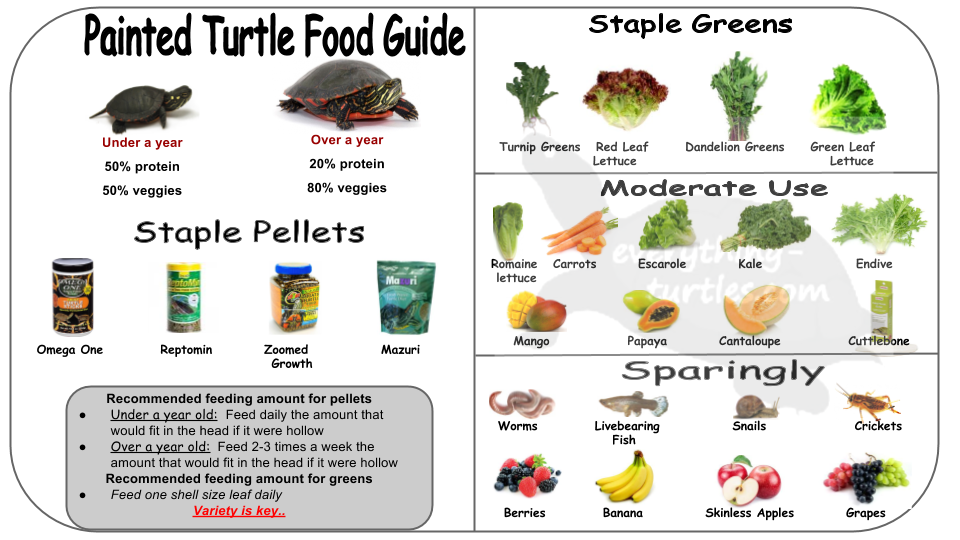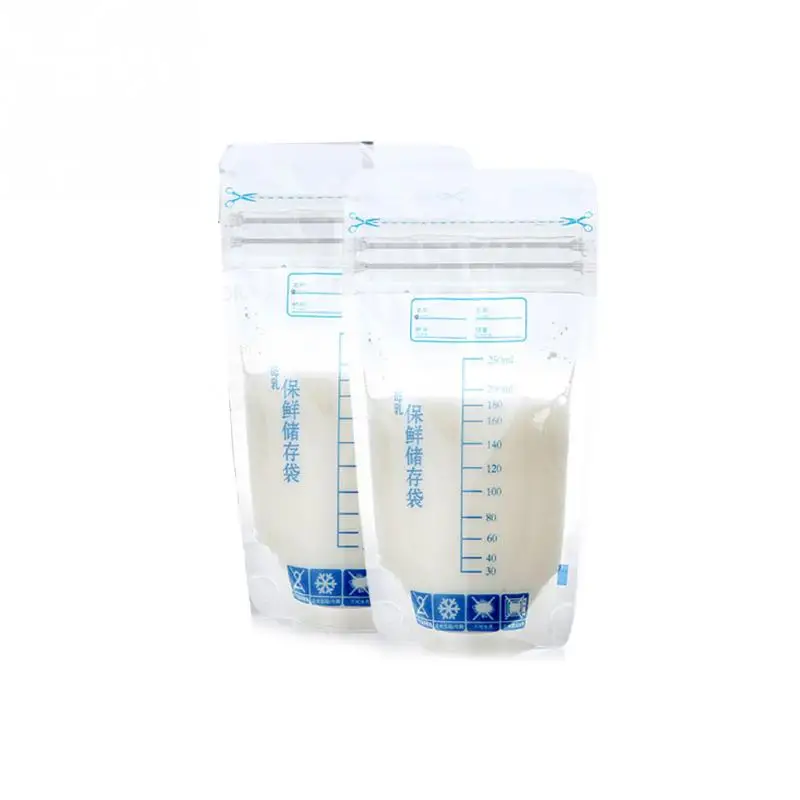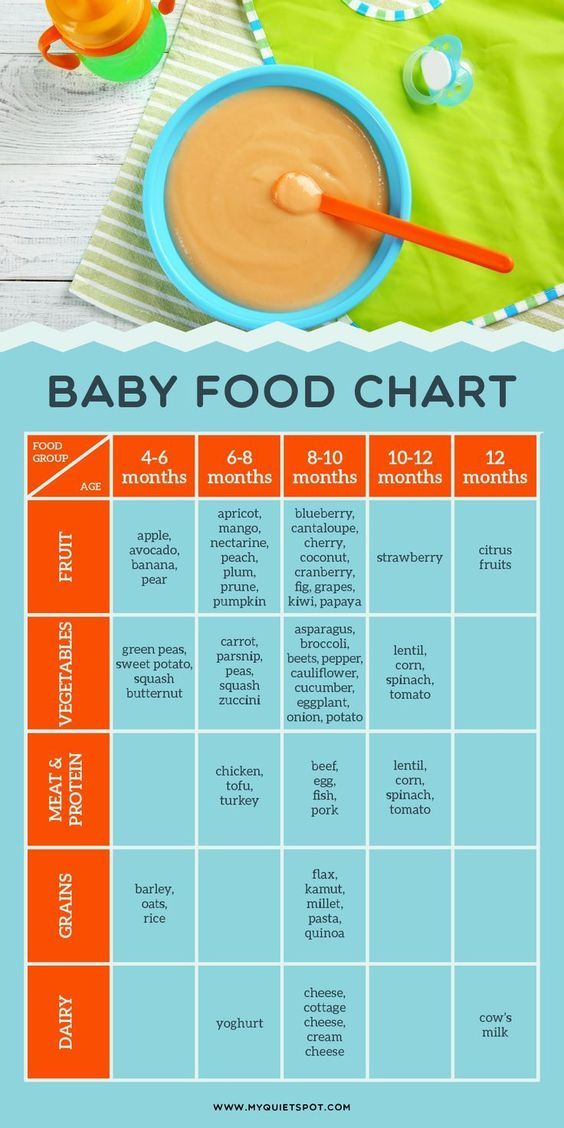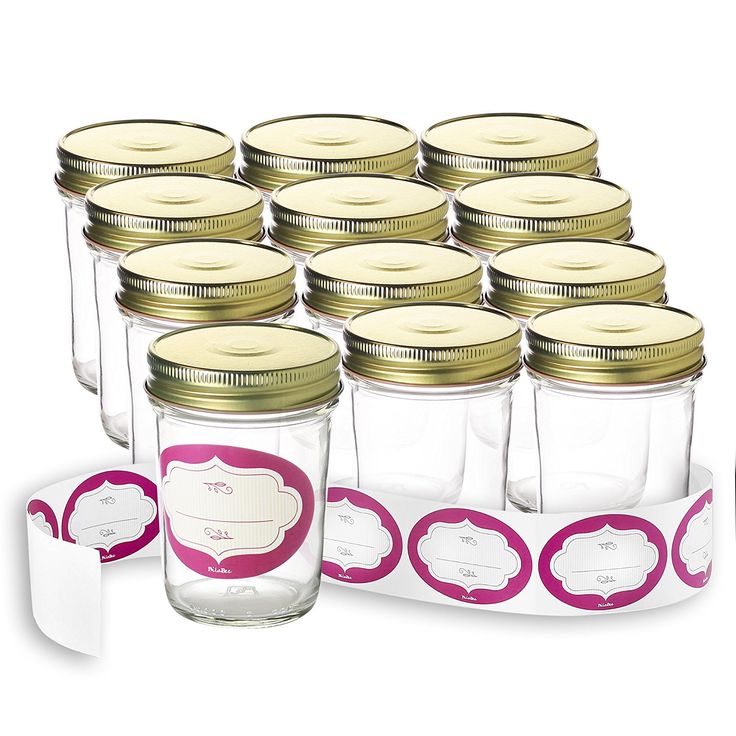What to feed orphaned baby skunks
Skunk Care
CARE FOR ORPHANED SKUNKS
http://www.orphanedwildlifecare.com/skunkcare.htm
|
IS THIS SKUNK TRULY ORPHANED?If the baby skunk is out of its burrow for extended periods of time on its own, it is likely orphaned and worth trying to catch.
RAISING A SINGLE SKUNK: If you determine that
the skunk is orphaned, it will have littermates that also need
help so continue to check the area frequently for up to a week. If no others are found it is vital to the
skunk's proper socialization and release to be raised with other skunks, a
single skunk has little chance of a successful release.
AGING THE SKUNK: In order to properly care for the baby you have found, it is important to know its age. Consult the chart on the back to assess age.
FEEDING: Orphans that have been without their
mother will be suffering from chill and dehydration. They must be thoroughly warmed first, and then offered warmed
rehydration solution. Pedialyte is a
rehydration solution that is available in drug stores- it should be heated to
body temperature and offered every couple hours for the first several
feedings. Feed the baby skunk esbilac
powder, mix only enough for 24hrs and keep it refrigerated. SUPPLEMENTS AFTER WEANING: There are several supplements that are recommended be added to a skunk's diet after it is weaned: Taurine - an amino acid that is available in capsule form from health food stores. Open
capsule and sprinkle granules on skunk's food. Each weaned skunk should get 150 mg. Calcium - 50 mg. elemental calcium per skunk per day - this can be sprinkled on food. It is important as skunks can suffer from metabolic bone disease. Vitamin D - 30 IU Vit D-3 (divide the tablet by 13 if it is a 400 IU tablet). Vitamin D assists in calcium being properly absorbed. If you are not able to get calcium and vitamin D, you can sprinkle bone meal on food for weaned skunks.
HOUSING: Housing requirements will change as the skunk grows and develops, see chart for details.
RELEASE: The skunks will not be ready to be
released until they are 16 weeks old (usually late August or early
September). It is ideal for the skunks
to spend approximately 2 months in their large outdoor cage (4ft x 8ft, made of
1 welded wire mesh). The cage should
also have a bottom made out of welded wire mesh to prevent the skunks from
being able to escape, the cage should set flat on the ground and the bottom can
be covered with some earth.
DISEASE: Skunk kits often carry roundworm and may need to be de-wormed, you can talk to a vet about this. Skunks are susceptible to distemper, you may want to consider having the skunk(s) vaccinated for distemper as well as against rabies. If you are concerned about rabies, you may want to consider having a pre-exposure vaccine for anyone who will be handling the animals-call your vet for further information. Furthermore, with all animals, you should always take precautions to avoid being bitten while you are handling the animal. **In some jurisdictions it is illegal to care for skunks and you should consult your government wildlife agency.
|
|
AGE |
FEEDING
|
STIMULATION |
HOUSING |
SPECIAL CARE |
|
|
Birth 30-35g -nearly naked -fine hair showing black & white pattern -eyes & ears are sealed
|
2 - 2.
5- 6 times per day.
|
-stimulate genital area before and after feeding to induce elimination. -use a q-tip or the tip of your finger dipped in warm water. |
-vital to house baby animals inside a house -cardboard box filled with soft, ravel free blankets and a hot water bottle. -protect from drafts.
|
-when handling the skunk hold its tail between its legs, this way it can not spray. Be gentle and do not startle the skunk and you should not have problems with it spraying. -wrap skunk in a soft towel when removed from box, to protect from drafts. -watch for signs of diarrhea. Stool may turn to a soft, yellow pudding from the formula.
|
|
|
1 week ~50-75g -slightly furred -skin becoming pigmented |
4-6 mls. Formula
5 - 6 times per day
|
-same as above |
-same as above |
-wrap in towel while feeding. |
|
|
2 weeks -weight 125g -fully furred -eyes still closed |
8-10 mls.
4 times per day
|
-same as above |
-same as above
|
-wrap in towel while feeding. -any diarrhea from formula should have cleared up by now. (Call your vet if it still has diarrhea) |
|
|
3 weeks -eyes & ears open |
10-15 mls. Formula
4 times per day
|
-same as above |
-can
be moved into a large pet carrier, continue to provide towels and blankets. |
-wrap in towel while feeding.
|
|
|
4 weeks -weight 340g -attempting to walk on short legs |
15-20 mls. Formula
4 times per day
|
-same as above |
-same as above. -can eliminate artificial heat source
|
-introduce
dry dog kibble (smaller size kibble for small breeds is best), moistened with water, along with a separate dish of drinking
water. Refresh solid foods morning
and night.
* never use either puppy kibble or cat kibble as they are too high in protein and cause metabolic bone disease in skunks. |
|
|
5 weeks -very playful, steadier on legs |
20-25 mls. Formula
3 times per day
|
--skunk should now eliminate on its own. |
- same as above
|
-continue to feed dog kibble (increase as needed), and introduce natural foods, nuts, fruits, cooked meat, vegetables, eggs and occassionally mealworms and crickets. These foods are critical to produce a balanced, healthy diet. *Depending
on teeth development, moistening of kibble can be eliminated. |
|
|
6 weeks
|
25-30 mls. Formula
2 times per day
|
|
-same as above |
-same as above |
|
|
7 weeks -fully weaned
|
30-35 mls. Formula
1-2 times per day
|
|
-
skunks are now ready to live in the large outdoor cage. |
-skunk should require very little formula and should be eating solids consistently. Wean fully during the 7th week. See Supplements outlined under Feeding. |
What To Feed Orphaned Baby Skunks?
Whether you live in an urban area or out in the country, skunks are everywhere. And it’s about the time of year when baby skunks are found orphaned. Most people immediately want to bring those babies in and care for them. But they can be a lot of work, especially when it comes to feeding. So let’s go over how to care for these kits. And most importantly, what to feed orphaned baby skunks.
Making Sure The Kits Are Orphaned
As humans, we like to swoop in and save helpless baby animals without giving it much thought. But we encourage you to take a step back from the situation. We need to make sure that these babies are actually orphaned and that the mother isn’t coming back for them. So keep an eye out on the baby. And if the mother doesn’t arrive within 5 hours, take the baby inside.
But we encourage you to take a step back from the situation. We need to make sure that these babies are actually orphaned and that the mother isn’t coming back for them. So keep an eye out on the baby. And if the mother doesn’t arrive within 5 hours, take the baby inside.
Five hours is the perfect amount of time to wait since most kits are fed every 4-5 hours. So if your kits are still outside, take a dry towel and wrap them up. If the kits are small with little hair, you will need to keep them in a dry, dark place. If there is only one baby, you will also want to look around for others. Most skunks will have anywhere between 4-6 babies at a time. And if you rear more than one together, they have a better chance of survival.
Checking The Laws
Now that the orphaned skunks are inside and safe, you will need to check your local laws. Currently, it’s only legal to keep skunks in 17 states. And if you have too much contact with the kits, it’s nearly impossible to release them back into the wild. So it might be best to contact your local wildlife agency to care for the skunks. But not everyone has a wildlife agency equipped for this, and that’s why we will help you.
So it might be best to contact your local wildlife agency to care for the skunks. But not everyone has a wildlife agency equipped for this, and that’s why we will help you.
Preparing A Home For Them
One of the first things you will need to do is figure out where to put your baby skunk. A warm dark place is best for them with old towels for bedding. Some people prefer to use an old cardboard box, but it won’t be long until they outgrow this. When your kits turn three weeks old, they will need to be transferred into a kennel or pet carrier with less than an inch bar spacing. You could even use rabbit or guinea pig cages if you have access.
The First 24 Hours
Now that your skunk kits are inside and safe, the most important thing to do is warm them up. Most people want to jump right into feeding and giving animals water. But this could cause more harm than good. The reason for this is that it takes a lot of energy to digest food. And if you feed them before their body temperature is stabilized, it could displace where their energy is needed most.
Keeping warmed rice bags or hot water bottles are perfect for warming up your little skunks. Once your kits are warmed up, you can give them liquids to rehydrate. But you don’t want to provide them with regular water. Instead, you will want to syringe feed them unflavored Pedialyte warmed to body temperature to get them rehydrated. Every few hours, give them as much as they can drink without it coming out of their nose. If the liquids start bubbling up, that means they are over drinking. Just turn them upside down and gently pat the baby’s back, and all will be fine.
Estimating The Age & How Much To Feed
With your baby skunk rehydrating, it’s time to start guessing how old your baby kit is. To do this, you will need a scale and an excellent observation of the skunk. Here is what to look for when guessing how old your kits are and how much to feed them. You can also use this as a guide to keeping up with your skunk’s growth and development.
Birth
When a skunk is first born, they are naked with closed eyes and ears. These little guys are only 30 to 35 grams. So it’s very unmistakable when you have a kit that is a newborn. A baby skunk this young will be eating 2-2.5 ml of formula 5-6 times a day. That means you will need to be ready to feed every four hours, day and night.
These little guys are only 30 to 35 grams. So it’s very unmistakable when you have a kit that is a newborn. A baby skunk this young will be eating 2-2.5 ml of formula 5-6 times a day. That means you will need to be ready to feed every four hours, day and night.
One Week Old
In that first week of life, the baby skunk grows a lot. They are getting a fuzzy halo of hair all over their bodies, but their eyes and ears are still closed. If you suspect that your skunk is a week old, you should feed it 4-6 ml of formula 5-6 times a day. A baby kit will also weigh about 50-75 grams, but depending on how long this kit has been orphaned, it might have lost some weight. They will gain that weight back quickly, and then some.
Two Weeks Old
Once your kit is two weeks old, it becomes fully furred. They won’t have their ears and eyes open just yet, but it will happen soon. Your skunks will weigh about 125 grams at two weeks old if they have developed on time and not left abandoned for long.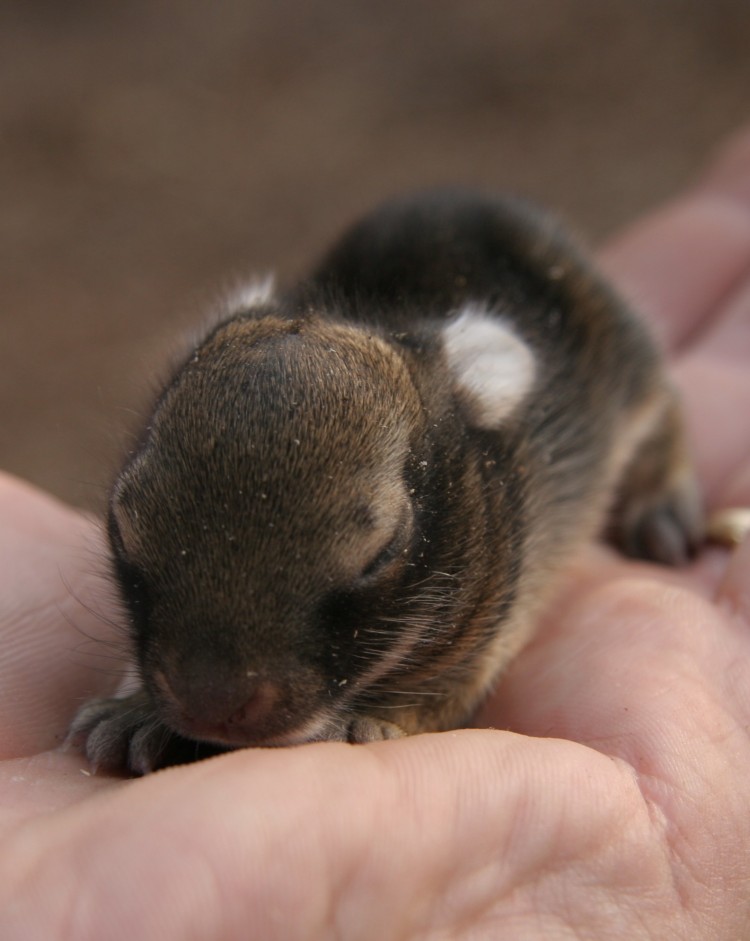 They will also increase the amount of formula and decrease the feedings at this time. With only 8-10 ml four times a day, so you can finally get more than a few hours of sleep at night.
They will also increase the amount of formula and decrease the feedings at this time. With only 8-10 ml four times a day, so you can finally get more than a few hours of sleep at night.
Three Weeks Old
At three weeks old, your baby skunk will just start to open its eyes and ears. They might even start trying to get around a little bit with this newfound eyesight. But the movements will be very jerky still and not coordinated. Your baby skunk will also start drinking more milk than they have previously. With 10-15 ml four times a day, your skunk will go through a rapid growth spurt.
Four Weeks Old
Now your skunks will start to get fun around a month old. With eyes open, ears open, and the strength to pull themselves up, your kits will begin to make their way around. They will start to roam and play around the nesting space. They will also start to really pack on some weight. By four weeks old, your kits will weigh 340 grams, and eating enough for it too.
Your kits will still be getting 15-20 ml of formula. But you will also want to introduce high-quality dog food at this time every morning and every night. In a shallow dish, wet the food down until it expands and becomes soft. And don’t forget to give them fresh water along with this new food.
But you will also want to introduce high-quality dog food at this time every morning and every night. In a shallow dish, wet the food down until it expands and becomes soft. And don’t forget to give them fresh water along with this new food.
Five Weeks Old
By five weeks old, your kits will be playing with confidence and romping around. And yet again, you will need to up the amount of formula you feed your kits. 20-25 ml per kit three times a day, plus the moistened dog food should be sufficient. But you will also be introducing new foods around this time. Feeding various fruits, vegetables, and bugs will round out the skunk’s diet and prepare them for wild living.
Six Weeks Old
Right about now, your baby skunks will be eating more solid foods than ever before. They are growing and starting to look more like adult skunks. But they are still getting formula a few times a day. 25-30 ml of milk twice a day and solid foods provided in between is enough. You can also stop wetting the dog food at six weeks since all of the skunk’s teeth are strong enough.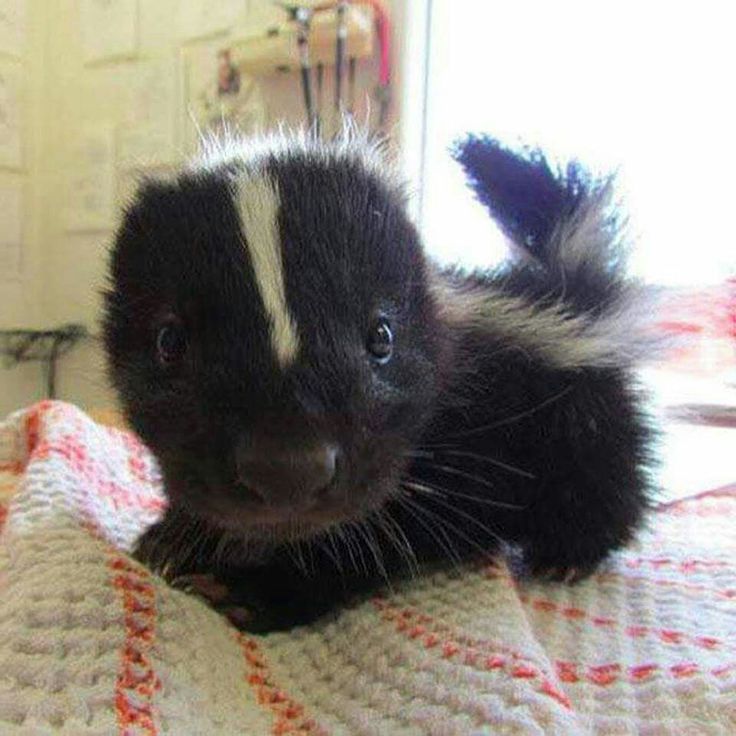
Seven Weeks Old
And now it’s time to start weaning your little kits. To start, you will want 30-35 ml of milk once a day and slowly taper off how much you give them. Encourage them to eat more dog food and supplement with lots of vegetation and bugs. Things like mealworms and crickets are full of protein and will fill up your skunk’s stomach well.
How To Feed A Baby Skunk
Now that you know how old your skunk is and what they need to eat, you might be wondering how to feed it. Most people want to jump right in and buy bottles used to nurse kittens or puppies. But you don’t want to do this. Skunks are very aggressive eaters, and if you feed them with a bottle, they will engorge themselves.
Instead, you will need to buy a plunge-style syringe that measures in milliliters for the best feeding. With these syringes, you can control how fast or how slow your skunk will eat. It might also help to get plenty of backups of these syringes. Skunks are notorious for chewing on them and rendering them useless with how aggressively they suckle. So having extras will save a lot of trouble.
So having extras will save a lot of trouble.
Once you have your syringe filled with the proper amount of formula, it’s time to feed. With as little contact as possible, hold the syringe close to the skunk’s mouth. They will move their heads around to find the milk themselves, which also builds up muscle. Feed them slowly and watch for signs of choking.
If you notice milk bubbling out from the kit’s nose, gently pick them up and turn them upside down. Gently but firmly rub their backs until the bubbling and sneezing stops. And don’t forget to clean their little mouths afterward. The formula is thick, and it only gets thicker when it dries. So keep their noses and mouths clean with a damp cloth after every feeding.
The Best Formula
What to feed orphaned baby skunks wouldn’t be complete without talking about the best formula to buy. It’s essential to find a formula that will have everything skunks need. The best formula on the market is Esbilac for puppies.
This milk comes in either a powdered or canned form and most closely resembles a skunk diet.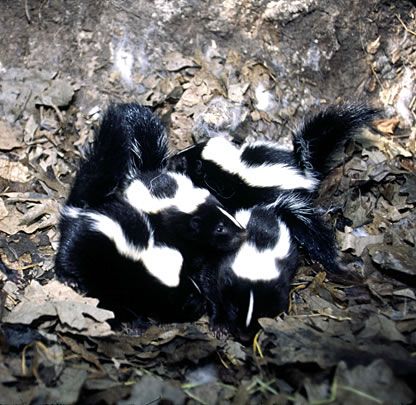 The powdered formula usually costs less and can be made 24 hours in advance and in smaller quantities.
The powdered formula usually costs less and can be made 24 hours in advance and in smaller quantities.
Canned milk might seem like a more convenient way to go but end up being a big waste in the end. The reason for this is that each can spoils 24 hours after being opened. And there’s no way for a skunk to drink the entire can in that amount of time. So to save a little money, you can buy the bigger containers of Esbliac.
The Best Kibble Food
Around four weeks old, you will start to introduce dry dog food into your orphaned skunk’s diet. But you do want to be picky about what type of dog food you get. You don’t want anything too high in protein and have a good balance of natural fruits and vegetables in the mix.
A grain-free small adult dog formulas are best for your baby skunk’s needs. The reason for this is that small breed formulas have smaller kibble sizes for your growing kit. And remember to stay away from puppy foods as they are too high in protein and can cause kidney problems in skunks.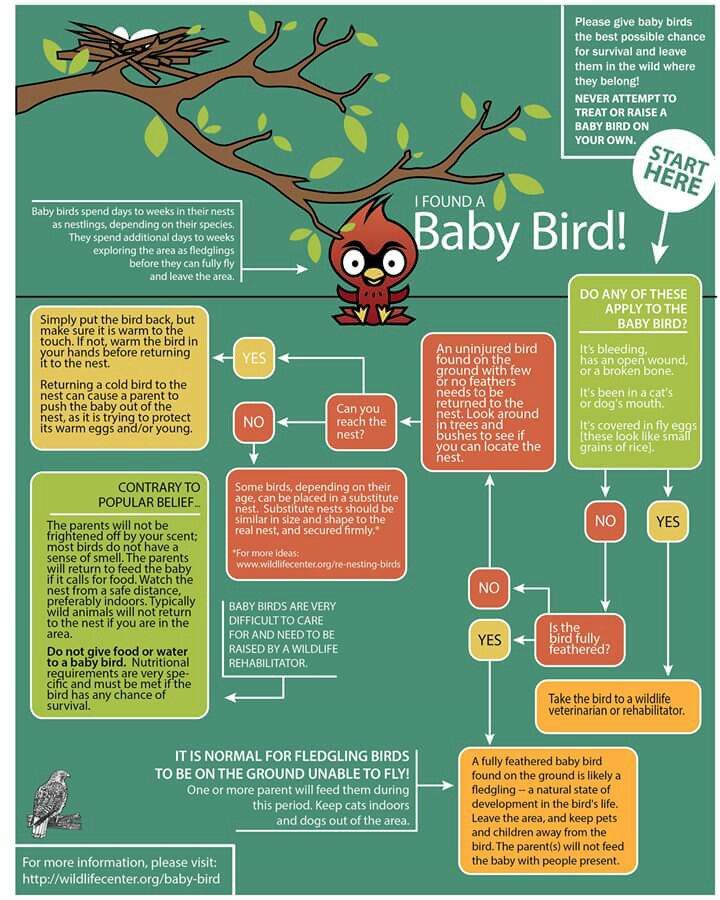
Other Foods
In addition to milk and dog food, you will also need to give your skunks an introduction to what they will eat in the wild. Things like berries, crickets, mealworms, cooked eggs and meat, fruits, and vegetables are all critical to your skunk’s diet. If you don’t feed these types of foods, it can be impossible to wean your kits. Not to mention it will make living out in the wild harder for them.
So how do you feed these types of foods? Most people put them into a shallow bowl until they are strong and move about without a problem. Then you might try hiding it inside the cage under bedding or using products like the Snuffle Mat to enrich them and encourage foraging.
Supplements
Another thing you will need to feed your weaned skunks is supplements. Taurine and bone meal are vital minerals for a growing skunk. These are supplements that wild skunks can find through different food sources. But on a diet of dog kibble and fresh food, your skunks could be lacking.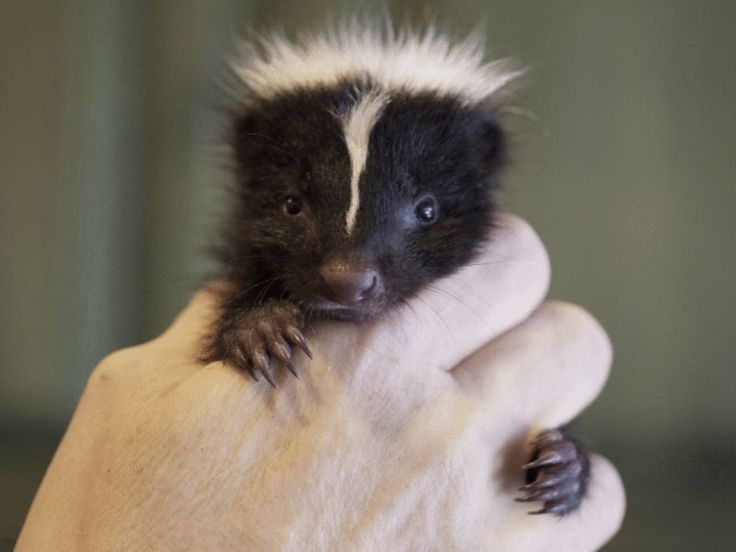
You can get these supplements at any health foods store, and they come in either powder or capsule forms. All you need to do is sprinkle 150 mg of taurine and 50 mg of bone meal onto their food daily. Your skunks will eat it up and grow up healthy and strong.
Don’t Forget About Stimulating For Excrement
Now, this might sound like a gross subject. But it’s something that most small animals can’t do on their own until they are older. That’s right. You are going to have to help your baby skunks poop and pee. To do this, you will need a cotton swab, warm water, paper towels, and gloves.
Once your gloves are on, hold the skunk over a bit of paper towel or trash can. Dip the cotton swab into the warm water and rub it across the genitals. You can find the genitals at the base of the tail on the underbelly. When you gently massage this area, you mimic a mother skunk’s actions to help her kits go potty.
After every feeding, you will want to do this to make sure that your kits are staying hydrated and nourished.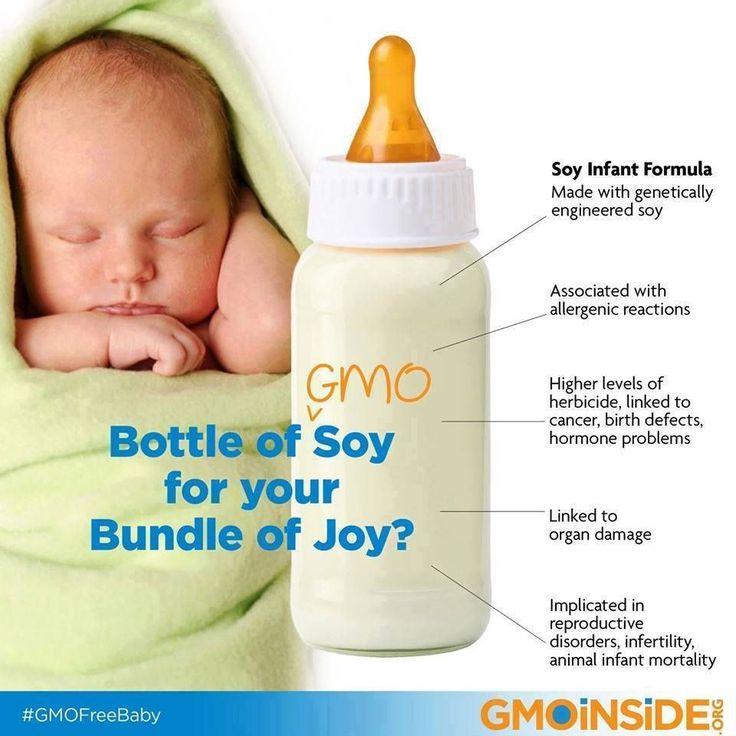 And you will need to stimulate your kits until they are five weeks old. After that time, they will go to the bathroom on their own.
And you will need to stimulate your kits until they are five weeks old. After that time, they will go to the bathroom on their own.
Getting Ready For Release
Now you know everything there is to know about what to feed orphaned baby skunks. Once you get your kits weaned, you will need to prepare them for living out in the wild. Up until now, you have kept your kits in the dark room of the house or garage. But around three months old, they will start spraying and lifting their tails. So it’s best to get them out of the house before then.
We recommend getting an outdoor enclosure 4×8 feet with one-inch wire to put your kits in when they turn eight weeks old. This gives your kits the perfect amount of time to adjust to outdoor life before releasing them. Adding things like a sandpit and nesting box will also encourage them to behave in natural behaviors. Just remember to keep as little contact as possible with them. When your baby skunks turn 16 weeks, you are ready for that bitter-sweet moment of release. You have been a good skunk surrogate, and maybe even some good karma along with it.
You have been a good skunk surrogate, and maybe even some good karma along with it.
And That’s All You Need To Know
With your skunks eating and gaining weight every week, you will feel like a proud skunk mother. Now it’s time to release your skunks into a secluded area away from humans and roadways. Preferably a space with lots of brush cover and a water source nearby. You might even give them a small amount of dog food to get them started until they make their way off. It’s a bitter-sweet, moment, but you’ve done a good thing.
| General information about skunks: The homeland of the skunk is America. Many stories about the American skunk are known firsthand, but recently animal lovers have learned to "use" the skunk as a pet. The skunk is well tamed, can carry out elementary commands and perform the function of decorating a country house. Choosing a healthy puppy is not difficult, the first thing you should pay attention to is how skunks live at the breeder. Do not be alarmed, but there is still a smell in the room where the skunks are kept, and when there are a lot of them, especially at the birth of puppies, you cannot enter the room without a gas mask. This is due to the fact that at the birth of babies a very specific smell is released (the smell of a skunk nest). Therefore, a normal person in an ordinary apartment will not breed skunks; for these purposes, some room near a private house is usually used. With a single correct content, the skunk will not smell. The animal (if you take it for home keeping without a cage) must be taken from 1.5 months to 3 months, otherwise there is a risk that later it will be less contact . Here we will describe the management of both tame and caged skunks. Let's start with the tame and domestic skunk. There is an opinion that a cage is not needed for such a skunk, but if you carefully read this article about skunks and their habits, you will still agree that upbringing without a cage will be extremely difficult. If you have had the experience of keeping a small dog, then you already know what you need - a toilet, a bed, bowls and toys. Food bowls. There are no problems here. You can buy metal paired bowls on a stand, ceramic or plastic. Bowls need medium size. The water in the bowl should be changed regularly. By the way, the skunk does not like heat, so in hot summer it is best to put a small basin of water so that the skunk can cool down. Approximate menu (varies by availability): In the morning: mixed vegetables + live food or raw/boiled egg + cottage cheese + dried fruit during skunk begging. After a night of running around, the skunk is very hungry, so vegetables and meat go with a bang. In the evening: fruit platter + yoghurt or milk + rice + live food. After a daytime nap, the skunk is not hungry, and fruit is like a light snack. After eating dairy products, it is better to wash the skunk's face immediately, otherwise it will wipe all protruding corners of upholstered furniture or carpet. nine0010 Never give chocolate, salt, citruses!!!!!!!!!!! Recommended dose: 4. Behavior. Skunk should be played with and given as much time as possible. You can talk to him and teach him different commands - very well trained! We have already described potty training above, now we will focus on accustoming to a place. Bathing. The skunk should be taught to wash. Start by washing the paws - just bring the baby to the sink and turn on the warm water jet. When washing it for the first time, it is better to stroke it and speak affectionately. Then you can already fill the bath and watch the swims, just be careful that water does not get into your ears. After washing, you can let the skunk shake itself off and you can wipe it with a towel, clean the ears with a cotton swab. Walking. Walking with a skunk is only necessary on a harness! Be careful with skunk walking areas! Do not let the animal go on city lawns, asphalt, in public places for walking dogs, cats, ferrets, etc.! Moreover, our cities are not distinguished by cleanliness: the remains of food waste, the corpses of mice and rats, spitting, broken glass are lying not only on the streets and courtyards, but even in recreation parks. If you want to go out with a skunk to get some air, hold your animal in your arms. Skunk nails are long and tubular. For trimming, you will need nail clippers for small dogs and a regular nail file. We take the skunk by the paw, turn the claws against the light, cut a little away from the pink filling, and grind the edges with a file so that the claw tapers to the bottom. If the claw is not sharpened, then the skunk will cling to carpet or other soft materials, which will lead to claw injury or delamination. Skunk ear shells are very simple in structure, ear canals are narrow. Ears do not require special cleaning: once every two weeks for prevention or after bathing. Only cotton swabs should be used. The skunk really likes this procedure, he will gladly let you dig into his ears at least every day. nine0008 If you notice that your skunk is scratching its ears vigorously, and a lot of earwax has accumulated in the ear canals, contact your veterinarian who will prescribe tick drops for you. Foot and Ankle Prevention Skunks have very large heels, which also need to be looked after. Get sea buckthorn oil in your first aid kit. After washing, the heels and palms of the skunk dry out a little, so they need to be lubricated. This procedure is also useful for nails and as a prevention of fungus. Moulting From mid-February, skunks begin their moulting season. Winter down from the body of the animal smoothly passes to your carpets. Arm yourself with a special comb with fine teeth and comb your animal. Otherwise, the skunk itself begins to “comb” with its teeth, which will lead to clogging of the stomach with wool. Skunks go through puberty in different ways. In males at 9-10 months, in females at 8-9 months. The male during the rut begins to run more, look for the female. Loses appetite, and sighs very sadly. The smell of secretion begins to appear. The skunk begins to wipe the sides of the jambs, the legs of tables and chairs, ride on the floor with his stomach, and also sign with small droplets while running. Therefore, for the period of the “wedding” (approximately 1-1.5 months), arm yourself with a rag soaked in a weak disinfectant solution. If you are not afraid of the smell, or you have already had experience with ferrets, then you can do without these measures. Change the potty frequently and wash the skunk's belly. Remember, the skunk boy smells only at the location of the penis during the rut! Americans advise to castrate boys up to 5-6 months, since males do not stop rutting, they are always ready to reproduce. If the skunk was purchased for home keeping, and not for an aviary, then I think it is wiser to heed their advice. When fully or partially copying the article, keeping the full signature and hyperlink to the site http://www.animal-planet.com.ua/ are required |
SALES OF ANIMALS |
Domestic skunk. It's possible - World of Animals White Kangaroo
As you know, more and more exotic animals settle in people's houses and apartments. Sometimes, this is a completely rash step, caused by tenderness to animals or the desire to show their status. So people give birth to complex primates, lion cubs and tigers. Of course, this rarely ends well. Any animal requires knowledge from its owner in terms of content, as well as opportunities to provide competent conditions. nine0010
So people give birth to complex primates, lion cubs and tigers. Of course, this rarely ends well. Any animal requires knowledge from its owner in terms of content, as well as opportunities to provide competent conditions. nine0010
But today we will tell you about an animal that is far from being as difficult to keep as a tiger, or even a monkey. It's a skunk. Yes, yes, you may be surprised, but they are also kept at home, and quite successfully. More recently, these animals were classified as mustelids, but, more recently, studies have allowed them to be identified as a separate family of skunks, which is much closer to pandas than mustelids and raccoons. Perhaps the similarity in color is not so accidental?
So, the first question everyone who hears about skunks at home asks: what about their glands?! They are removed. Usually at a very young age, at 30-40 days, while the cubs are in the nursery. This operation does not carry any harm, and does not affect the future life of the skunk.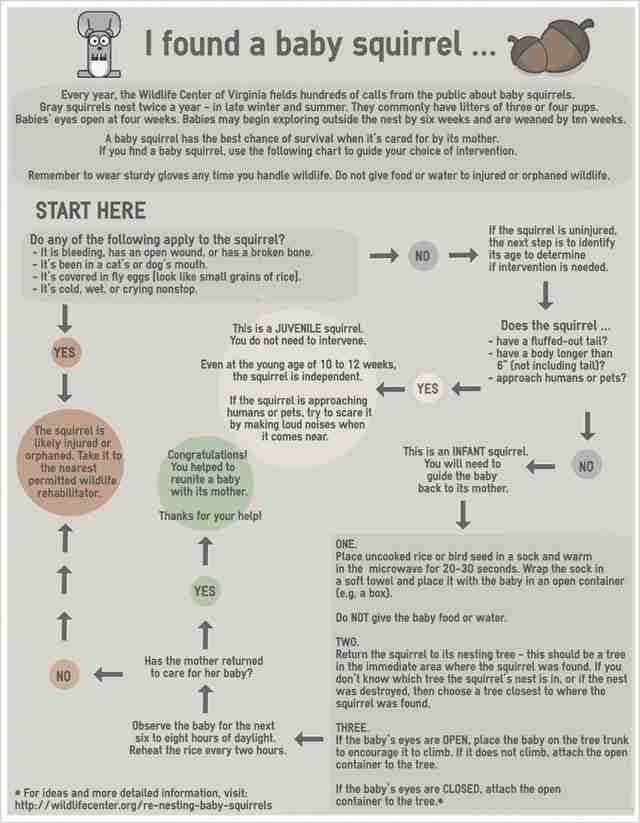 Unless he can stun his master with a deadly smell. nine0010
Unless he can stun his master with a deadly smell. nine0010
Perhaps the closest and most familiar to us analogue in the animal world in terms of content will be the ferret. Skunks also move in a horizontal plane and are not climbers. It is possible to accustom them to the tray, but, alas, it is not necessary to wait for the pet to get into the tray 100%.
Skunks eat a mixed diet that includes meat, fruits, vegetables, and some dairy products. You can feed your pet a good holistic cat food, adding fruits and vegetables to the diet. And some, solely for the fun of the skunk, buy insects for them. The skunk does not need them with a full diet. An adult pet usually weighs 3-5 kilograms, with males being larger than females. They can reach a weight of 6.5 kilograms, but it is important not to overfeed the skunk. nine0010
In nature, skunks live only 3-5 years, but in captivity, there is a case when a skunk has lived up to 14 years!
This is a very gentle and affectionate pet. If you tame a baby from childhood, then he shows himself to be an excellent pet. Skunks are animals that in the rarest case will use their teeth, so the chances of a skunk biting its owner are extremely small.
If you tame a baby from childhood, then he shows himself to be an excellent pet. Skunks are animals that in the rarest case will use their teeth, so the chances of a skunk biting its owner are extremely small.
These animals have long claws, which the skunk naturally needs to dig up insects. Since he does not have such an opportunity at home, it is necessary to regularly trim the skunk's claws. nine0010
This is a pet that prefers to sleep during the day, so it is more suitable for owl people. However, you can adapt the animal mode to your own if you do it smoothly, devoting more time to playing with your pet during the day. By the way, about games. Skunks play quite peculiarly. They can run after a fishing rod like cats, and during the game it's fun to jump. This will not leave anyone indifferent.
A skunk has also settled in our network of zoos, and not an ordinary one, but an albino! He lives in his usual mode, at a night exposition in the Vegas Crocus shopping mall.

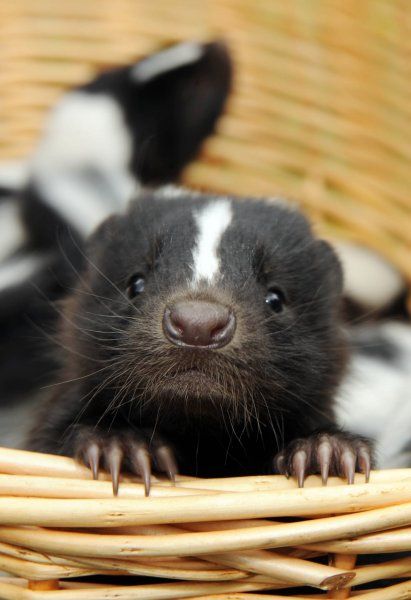 Esbilac is a puppy milk replacer, which you
should be able to purchase at a vet or pet store. Cow's milk, human baby formulas, and most pet
products (except Esbilac) are not suitable and will likely cause death. Use a 1cc or 5cc oral syringe (try a vet or
pharmacy), warm the formula, and hold the skunk in a towel, firmly, and
covering its eyes. The skunk will suck
very quickly and take too much formula if you are not in total control. If this happens the skunk will sneeze
formula out of its nose Stop feeding, turn upside down, gently rub its
back, and gently wipe the excess formula from its nose. Repeat this for about 5 minutes or until the
sneezing stops and breathing returns to normal. If severe this can cause immediate death or pneumonia on a
long-term basis. This is why bottles
are not suitable to use. To avoid this
from occurring feed in a quiet room, go slowly and watch both the skunk and the
syringe, if air bubbles appear in the syringe, stop feeding and expel the air,
(see chart on back for feeding schedule).
Esbilac is a puppy milk replacer, which you
should be able to purchase at a vet or pet store. Cow's milk, human baby formulas, and most pet
products (except Esbilac) are not suitable and will likely cause death. Use a 1cc or 5cc oral syringe (try a vet or
pharmacy), warm the formula, and hold the skunk in a towel, firmly, and
covering its eyes. The skunk will suck
very quickly and take too much formula if you are not in total control. If this happens the skunk will sneeze
formula out of its nose Stop feeding, turn upside down, gently rub its
back, and gently wipe the excess formula from its nose. Repeat this for about 5 minutes or until the
sneezing stops and breathing returns to normal. If severe this can cause immediate death or pneumonia on a
long-term basis. This is why bottles
are not suitable to use. To avoid this
from occurring feed in a quiet room, go slowly and watch both the skunk and the
syringe, if air bubbles appear in the syringe, stop feeding and expel the air,
(see chart on back for feeding schedule).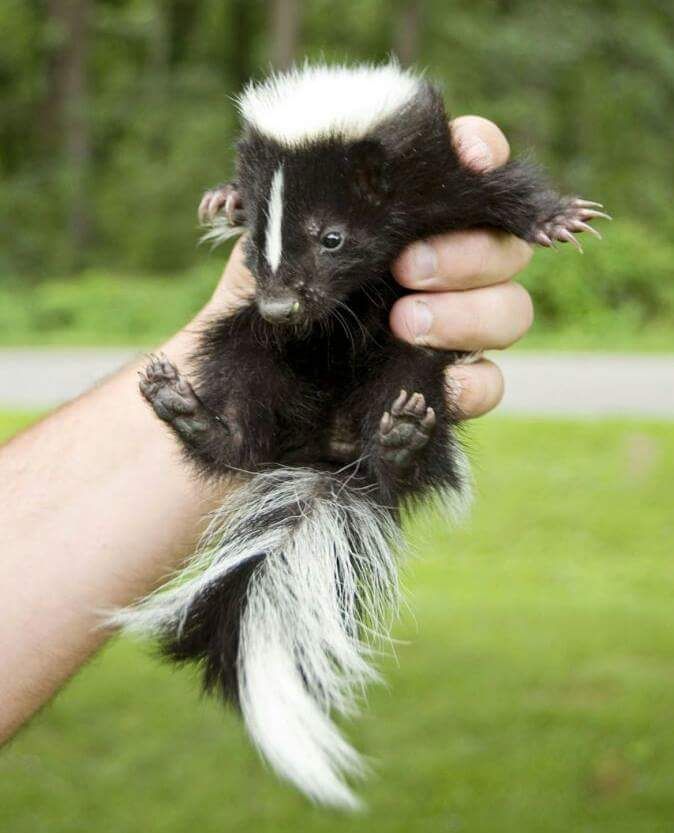 Once feeding is finished, wash its face well with a damp face cloth, as
formula dries quickly and can cause fur loss.
It is very critical that baby skunks are stimulated to urinate before
and after every feed. The skunk may be
doing it a bit on its own but this may be overflow and if not stimulated the
bladder will rupture. To stimulate a
baby skunk hold it over a garbage container.
Dip either your finger or a Q-tip in warm water and then light feathery
strokes over its genital area will cause the skunk to urinate and/or have a
bowel movement. Once the skunk starts
to pee don't stop as the skunk will then stop.
Once feeding is finished, wash its face well with a damp face cloth, as
formula dries quickly and can cause fur loss.
It is very critical that baby skunks are stimulated to urinate before
and after every feed. The skunk may be
doing it a bit on its own but this may be overflow and if not stimulated the
bladder will rupture. To stimulate a
baby skunk hold it over a garbage container.
Dip either your finger or a Q-tip in warm water and then light feathery
strokes over its genital area will cause the skunk to urinate and/or have a
bowel movement. Once the skunk starts
to pee don't stop as the skunk will then stop.
 per day.
per day. A nesting
box (20 x 15 and 12 high) sits on the floor of the cage. A sand box should also be in the cage that
is used for digging, make sure to change the sand frequently. Do not allow the family pets access to the
skunks, otherwise you are teaching them they have nothing to fear from domestic
cats or dogs, something that could cost them their life in the wild. For release, choose a site well away from roads, with a mixture of
woods, brushy corners, open fields, a water source nearby, and abandoned out
buildings. Before releasing it is
important to investigate the area, if there are neighbours trapping or harming
skunks, they should not be released there.
Also, check the forecast to be sure there will be at least 2-3 days of
dry weather after the skunks are released.
Skunks should be released in late afternoon and transported as far away
from the road as possible. Bring a
supply of dog food so that the skunks can have a food source until they find
their own in the wild.
A nesting
box (20 x 15 and 12 high) sits on the floor of the cage. A sand box should also be in the cage that
is used for digging, make sure to change the sand frequently. Do not allow the family pets access to the
skunks, otherwise you are teaching them they have nothing to fear from domestic
cats or dogs, something that could cost them their life in the wild. For release, choose a site well away from roads, with a mixture of
woods, brushy corners, open fields, a water source nearby, and abandoned out
buildings. Before releasing it is
important to investigate the area, if there are neighbours trapping or harming
skunks, they should not be released there.
Also, check the forecast to be sure there will be at least 2-3 days of
dry weather after the skunks are released.
Skunks should be released in late afternoon and transported as far away
from the road as possible. Bring a
supply of dog food so that the skunks can have a food source until they find
their own in the wild.
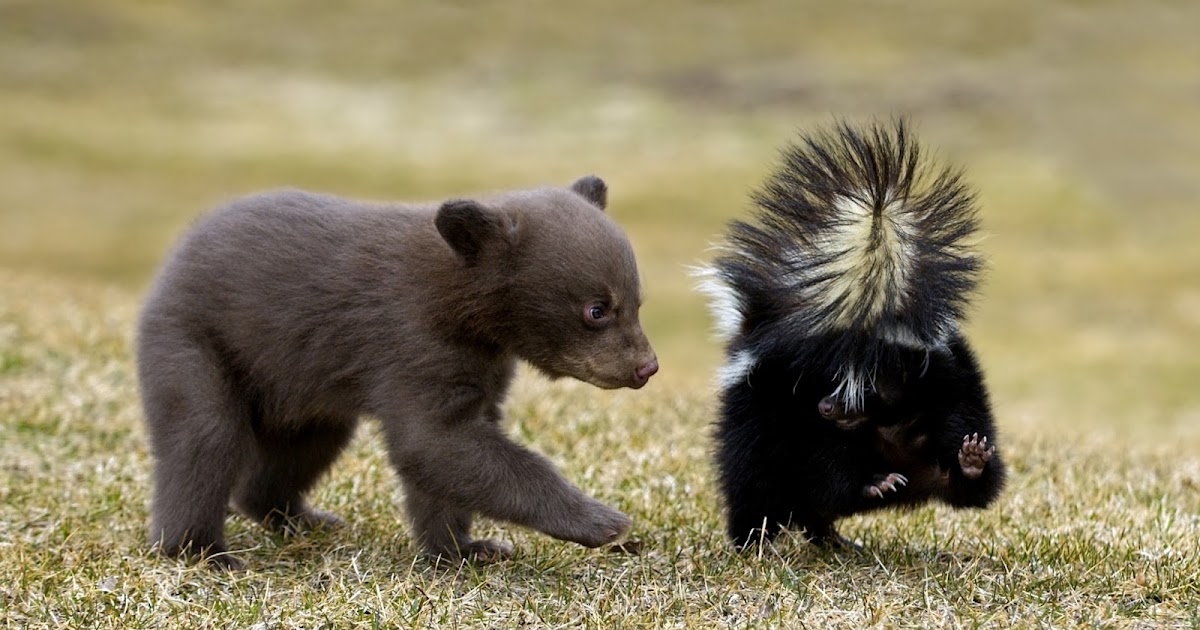 5 mls Formula
5 mls Formula
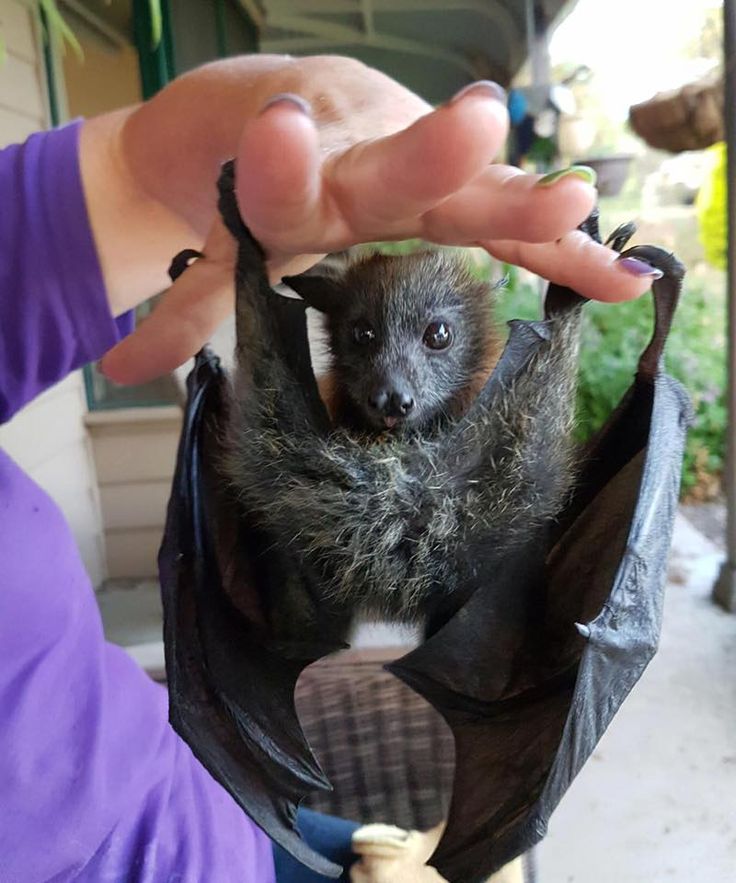 Formula
Formula
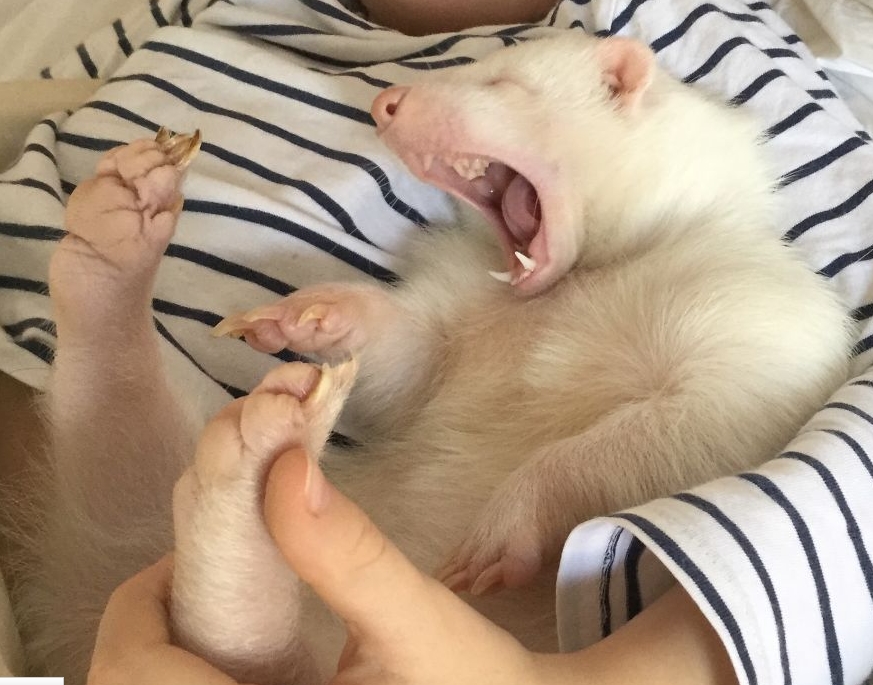

 They must have a secure nesting box and a
sand box (change frequently) for digging.
They must have a secure nesting box and a
sand box (change frequently) for digging. The glands that produce an unpleasant smell in domestic skunks are removed in infancy, and the skunk smells like an ordinary mink coat. nine0008 But before you buy a skunk, you should consider several factors:
The glands that produce an unpleasant smell in domestic skunks are removed in infancy, and the skunk smells like an ordinary mink coat. nine0008 But before you buy a skunk, you should consider several factors: 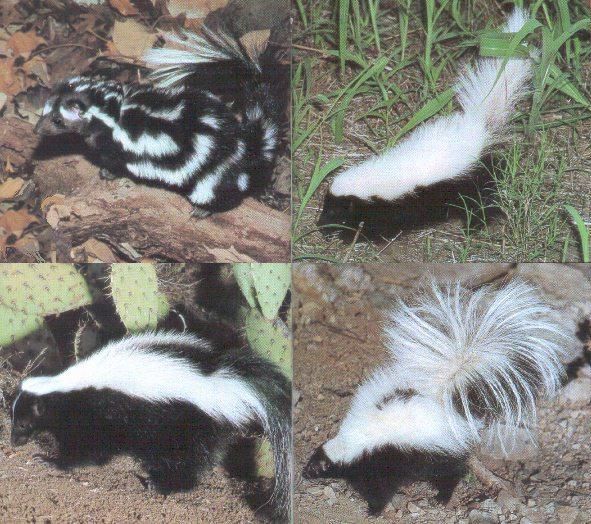 . Today, there are nurseries where you can order and purchase tame babies for apartment content, already with removed glands. We strongly advise against purchasing skunks from private hands, in markets or in stores. By purchasing an animal in a nursery, you protect yourself from the risks associated with upbringing and health, and you can always get qualified help. nine0008 Puppy at 1.5 months must have glands removed. Puppies have white teeth without plaque. A skunk puppy should have a shiny coat and the white stripes should not have a yellowish tinge. The optimal age for buying a puppy is 1-3 months, this is a guarantee that the puppy will completely get used to you and will trust you. Older skunks are much more difficult to tame, so keep this in mind, if you are interested in breeding skunks and you form a mate for yourself, then a puppy of any age will suit you. In older puppies at 4 months of age, you need to pay attention to the claws of the puppy, they should be even and covered with a cornea along the entire diameter.
. Today, there are nurseries where you can order and purchase tame babies for apartment content, already with removed glands. We strongly advise against purchasing skunks from private hands, in markets or in stores. By purchasing an animal in a nursery, you protect yourself from the risks associated with upbringing and health, and you can always get qualified help. nine0008 Puppy at 1.5 months must have glands removed. Puppies have white teeth without plaque. A skunk puppy should have a shiny coat and the white stripes should not have a yellowish tinge. The optimal age for buying a puppy is 1-3 months, this is a guarantee that the puppy will completely get used to you and will trust you. Older skunks are much more difficult to tame, so keep this in mind, if you are interested in breeding skunks and you form a mate for yourself, then a puppy of any age will suit you. In older puppies at 4 months of age, you need to pay attention to the claws of the puppy, they should be even and covered with a cornea along the entire diameter.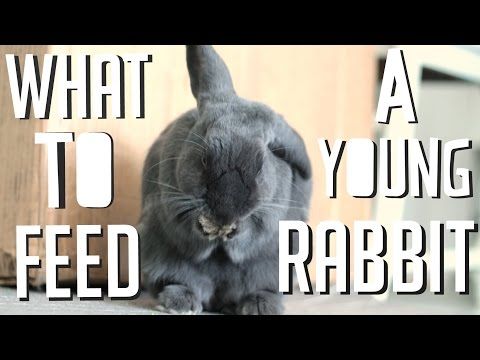 Babies' hind feet should be smooth and pink with no calluses or growths or bloody cracks. You can actually buy a tame skunk at any age, provided that this skunk grew up and was brought up by people, but if you buy a skunk of captive breeding and maintenance, then it is very difficult to tame a skunk after 3 ex months, it will take months. nine0008 When choosing the sex of a pet, one should take into account that males are more individual, independent, but more effective, larger and more beautiful than females. Females are more affectionate, neat (getting into the tray - 100%) and devoted.
Babies' hind feet should be smooth and pink with no calluses or growths or bloody cracks. You can actually buy a tame skunk at any age, provided that this skunk grew up and was brought up by people, but if you buy a skunk of captive breeding and maintenance, then it is very difficult to tame a skunk after 3 ex months, it will take months. nine0008 When choosing the sex of a pet, one should take into account that males are more individual, independent, but more effective, larger and more beautiful than females. Females are more affectionate, neat (getting into the tray - 100%) and devoted. 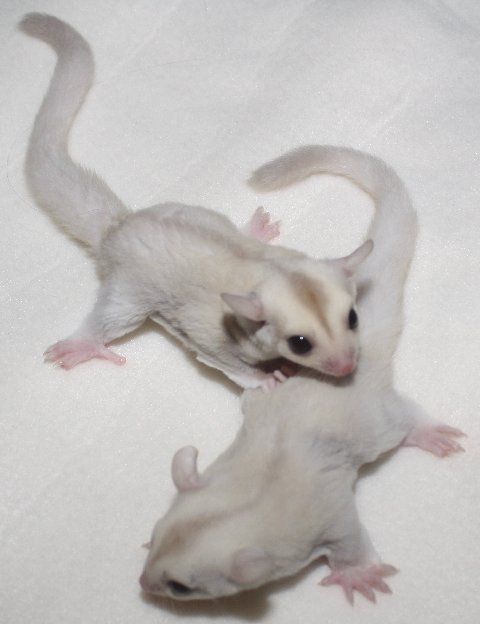 Let's start with the most interesting - the arrangement of the toilet. As a tray, a cat toilet is suitable. It is desirable to be larger and deeper so that you can pour a lot of filler. We immediately warn you that the "waste" of the skunk is extremely odorous, the smell from the tray is very unpleasant, so if you are not familiar with the smell of ferrets or you do not like it, then you should not start a skunk. Put a rug next to the toilet if you don't want the skunk to wipe his butt on the floor. The filler for the skunk toilet should be the best, granular fillers are suitable, the filler should be changed every 3 days. The toilet of the skunk must be washed as often as possible, otherwise there is an extremely unpleasant musky smell. Toilet training a skunk is not difficult, the training process is similar to potty training cats. nine0008 The first way: in the tray where he should go to the toilet, you need to put part of the skunk's feces for smell and let your puppy smell the tray, several times, after he goes to the toilet there, you need to praise him and give him a treat.
Let's start with the most interesting - the arrangement of the toilet. As a tray, a cat toilet is suitable. It is desirable to be larger and deeper so that you can pour a lot of filler. We immediately warn you that the "waste" of the skunk is extremely odorous, the smell from the tray is very unpleasant, so if you are not familiar with the smell of ferrets or you do not like it, then you should not start a skunk. Put a rug next to the toilet if you don't want the skunk to wipe his butt on the floor. The filler for the skunk toilet should be the best, granular fillers are suitable, the filler should be changed every 3 days. The toilet of the skunk must be washed as often as possible, otherwise there is an extremely unpleasant musky smell. Toilet training a skunk is not difficult, the training process is similar to potty training cats. nine0008 The first way: in the tray where he should go to the toilet, you need to put part of the skunk's feces for smell and let your puppy smell the tray, several times, after he goes to the toilet there, you need to praise him and give him a treat.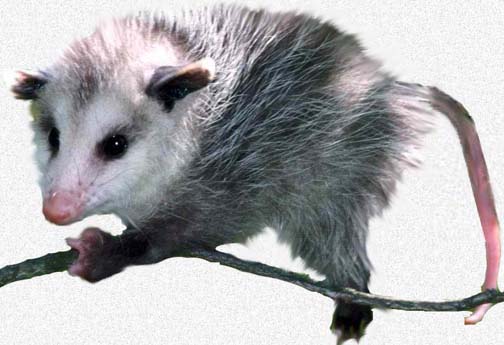 The second way: you need to put the puppy in the tray, wait until he does his job and give a piece of cheese (but, as you know, you can wait for a very long time). It usually takes a couple of days to get used to. If all the same, your skunk went by, then you need to use a loud intonation and pat your ear a little or give (slightly) on the pope. Then the skunk will quickly realize that he did a bad job. nine0008 Now let's talk about the skunk house. If you want the skunk to sleep in bed with you, then he will gladly do this. If you want the skunk to have a place, then buy a cat house or a large plastic carrier that the skunk can recognize as a mink. The house will need to be cleaned and laundered about once a week (think about this before bedding your skunk). As a rule, the skunk in the house does not spoil, but there are cases (all animals have them without exception) when “pyramids” and puddles end up in the house. So think 33 times before taking a skunk. nine0008 Now think again, since a pet skunk is interested in anything and everything, he will stick his nose everywhere!!! All lower drawers and shelves will open, bedside tables will move (so if there are antique vases on the bedside tables, it’s better to get away from sin), all boots and shoes in the wardrobe will be dug up, checked and bitten !!! And it is useless to wean a skunk from gnawing leather things.
The second way: you need to put the puppy in the tray, wait until he does his job and give a piece of cheese (but, as you know, you can wait for a very long time). It usually takes a couple of days to get used to. If all the same, your skunk went by, then you need to use a loud intonation and pat your ear a little or give (slightly) on the pope. Then the skunk will quickly realize that he did a bad job. nine0008 Now let's talk about the skunk house. If you want the skunk to sleep in bed with you, then he will gladly do this. If you want the skunk to have a place, then buy a cat house or a large plastic carrier that the skunk can recognize as a mink. The house will need to be cleaned and laundered about once a week (think about this before bedding your skunk). As a rule, the skunk in the house does not spoil, but there are cases (all animals have them without exception) when “pyramids” and puddles end up in the house. So think 33 times before taking a skunk. nine0008 Now think again, since a pet skunk is interested in anything and everything, he will stick his nose everywhere!!! All lower drawers and shelves will open, bedside tables will move (so if there are antique vases on the bedside tables, it’s better to get away from sin), all boots and shoes in the wardrobe will be dug up, checked and bitten !!! And it is useless to wean a skunk from gnawing leather things. And how happy the skunk is with fur things - a celebration of life! Therefore, keep fur coats and other fur products higher. I can also immediately warn that the skunk is not intended for a large apartment. If your apartment is more than 150 square meters, then it will be very difficult for the skunk to take root, since the baby's eyesight is poor, he will simply lose his bearings. The Skoon loves warm, small cozy spaces. nine0010
And how happy the skunk is with fur things - a celebration of life! Therefore, keep fur coats and other fur products higher. I can also immediately warn that the skunk is not intended for a large apartment. If your apartment is more than 150 square meters, then it will be very difficult for the skunk to take root, since the baby's eyesight is poor, he will simply lose his bearings. The Skoon loves warm, small cozy spaces. nine0010  A tame domestic skunk can also easily run wild and start biting if you spend little time with him. If you decide to take the skunk home from the enclosure, then you can sympathize. Will arrange chaos in the house more than a large monkey. Everything will turn over, it will gnaw everything, etc. So it is wiser to listen to our advice and take a puppy all the same up to 50 days of age.
A tame domestic skunk can also easily run wild and start biting if you spend little time with him. If you decide to take the skunk home from the enclosure, then you can sympathize. Will arrange chaos in the house more than a large monkey. Everything will turn over, it will gnaw everything, etc. So it is wiser to listen to our advice and take a puppy all the same up to 50 days of age. 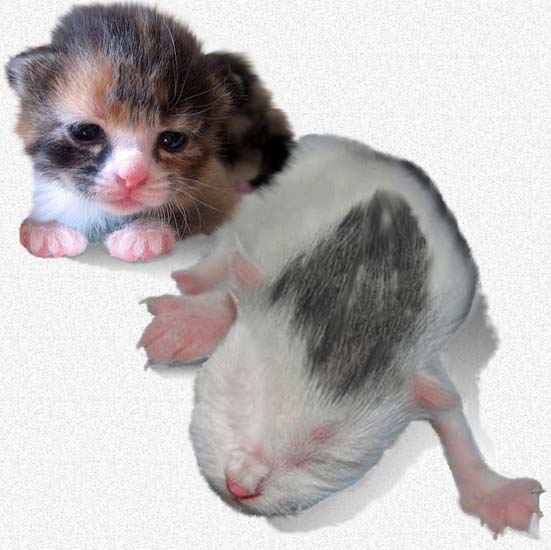 nine0008 Fruits: apples, bananas, cherries, melons, watermelon, seedless grapes, mangoes (peeled), papayas, kiwis, peaches, pears, some plums.
nine0008 Fruits: apples, bananas, cherries, melons, watermelon, seedless grapes, mangoes (peeled), papayas, kiwis, peaches, pears, some plums.  You can alternate weekly with quail. Give calcium 3 times a week on a tablet. If the skunk does not eat fish and shrimp - then one teaspoon 3 times a week. Olive oil, unrefined sunflower oil, corn oil 1/3 teaspoon to mixed vegetables. Drinking - regular non-carbonated bottled water. nine0008 It is better to cut vegetables and fruits into cubes or small slices. Vegetables are best mixed with live food and meat, or an egg. Fruit platter - with kefir / yogurt / goat's milk, cottage cheese, rice. Dried fruits can be fed when you prepare food for the skunk, and at that time he begs you, well, at least a piece, otherwise he faints. Funny spectacle! The skunk lays down on his stomach, takes the dried fruit with two paws, and starts to champ! Paws then it is better to wash or wipe with a wet cloth!
You can alternate weekly with quail. Give calcium 3 times a week on a tablet. If the skunk does not eat fish and shrimp - then one teaspoon 3 times a week. Olive oil, unrefined sunflower oil, corn oil 1/3 teaspoon to mixed vegetables. Drinking - regular non-carbonated bottled water. nine0008 It is better to cut vegetables and fruits into cubes or small slices. Vegetables are best mixed with live food and meat, or an egg. Fruit platter - with kefir / yogurt / goat's milk, cottage cheese, rice. Dried fruits can be fed when you prepare food for the skunk, and at that time he begs you, well, at least a piece, otherwise he faints. Funny spectacle! The skunk lays down on his stomach, takes the dried fruit with two paws, and starts to champ! Paws then it is better to wash or wipe with a wet cloth! 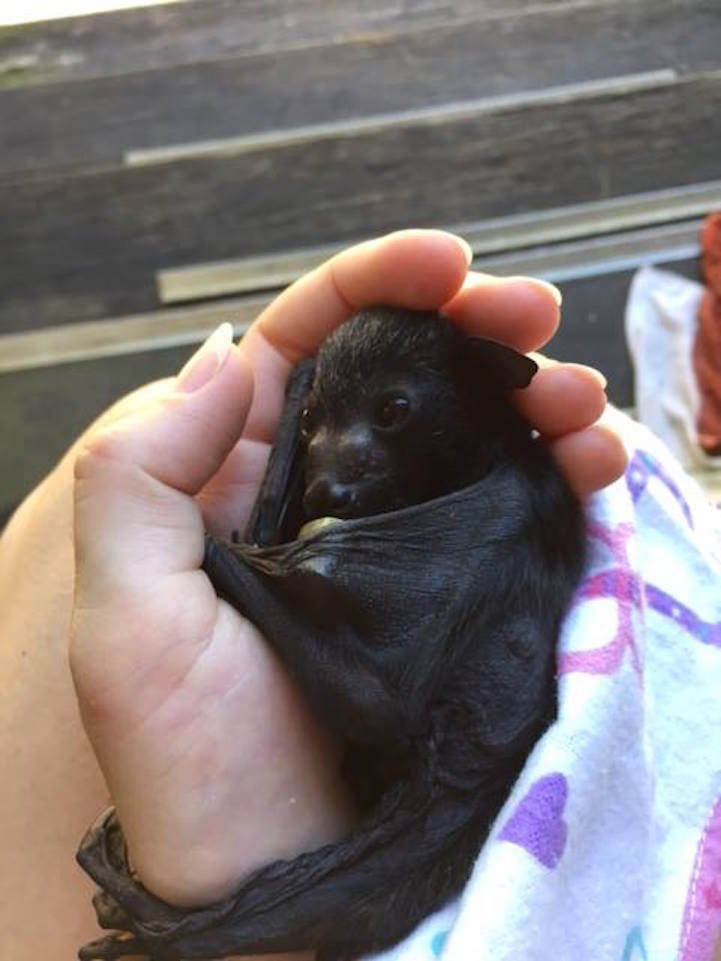
 If you do not want the skunk to sleep with you, you need to not only equip it with a house, but also teach it to sleep there! How to do it? Yes, just when you go to bed, take the skunk to the house and do not succumb to his provocative unhappy looks. It is very important to teach the skunk to play. Suitable cat toys. A bow on a string is especially attractive. The skunk will first watch the moving and rustling bow, then carefully lowering itself on its front paws, in a plastun way, but at the same time puffing up its tail, the skunk jumps on the bow, grabs its teeth and begins to try to “kill” the toy. From the outside, it just looks creepy. Zero grace, paws by themselves, head by itself. Skunks are not rodents. At home, they don’t gnaw anything, and they don’t need rubber toys. The only thing is a plush toy, it can be suitable for a company to sleep warmly and not be bored. The skunk sticks its nose into it, it can even hug it with its front and back paws, and snoring sweetly, drooling with happiness.
If you do not want the skunk to sleep with you, you need to not only equip it with a house, but also teach it to sleep there! How to do it? Yes, just when you go to bed, take the skunk to the house and do not succumb to his provocative unhappy looks. It is very important to teach the skunk to play. Suitable cat toys. A bow on a string is especially attractive. The skunk will first watch the moving and rustling bow, then carefully lowering itself on its front paws, in a plastun way, but at the same time puffing up its tail, the skunk jumps on the bow, grabs its teeth and begins to try to “kill” the toy. From the outside, it just looks creepy. Zero grace, paws by themselves, head by itself. Skunks are not rodents. At home, they don’t gnaw anything, and they don’t need rubber toys. The only thing is a plush toy, it can be suitable for a company to sleep warmly and not be bored. The skunk sticks its nose into it, it can even hug it with its front and back paws, and snoring sweetly, drooling with happiness.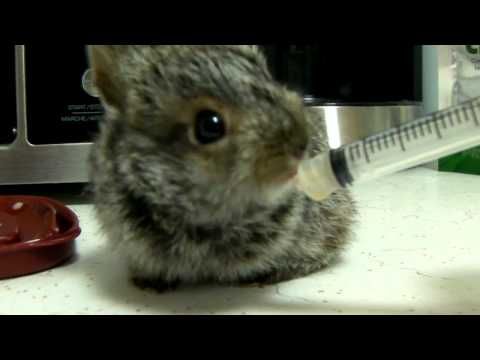 Therefore, your skunk's plush companion should be washed periodically. nine0010
Therefore, your skunk's plush companion should be washed periodically. nine0010  Dogs without leashes are also dangerous, even if they walk near their owner. A sharp jump of a dog, a grab of a skunk by the stomach or neck, and instead of a happy owner of a skunk, you will turn into an employee of a funeral home. nine0008 Skunks love to dig in the ground, so before you let your pet dig, make sure there are no broken glass or metal wire lying around. In the ground, the skunk will find bugs and worms, which will notify you with a loud champing and crackling of the shells of poor insects.
Dogs without leashes are also dangerous, even if they walk near their owner. A sharp jump of a dog, a grab of a skunk by the stomach or neck, and instead of a happy owner of a skunk, you will turn into an employee of a funeral home. nine0008 Skunks love to dig in the ground, so before you let your pet dig, make sure there are no broken glass or metal wire lying around. In the ground, the skunk will find bugs and worms, which will notify you with a loud champing and crackling of the shells of poor insects. 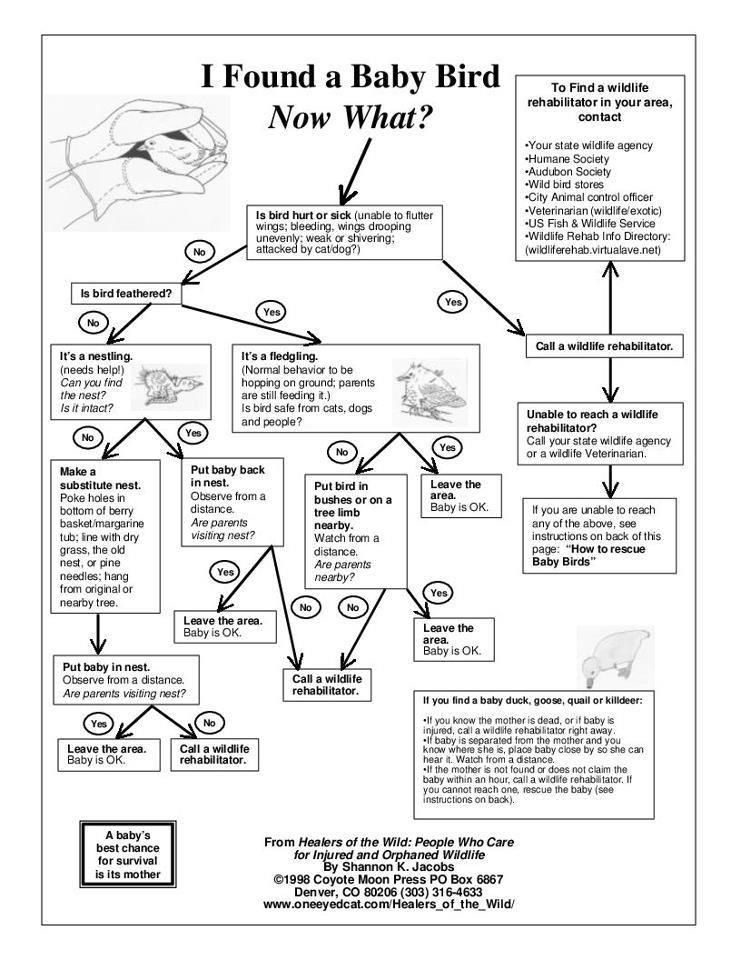 nine0008 If you accidentally cut off the claw more than necessary, and blood began to flow, the wound should be treated with a strong solution of potassium permanganate.
nine0008 If you accidentally cut off the claw more than necessary, and blood began to flow, the wound should be treated with a strong solution of potassium permanganate.  Unfortunately, not all veterinary clinics treat tables for animals with a disinfectant solution, and catching a fungus is a trifling matter! If corns and calluses appear on your favorite heels, which crack, the skin at the base of the claws begins to exfoliate, and the claws on the hind legs exfoliate and fall off - this is a fungus! More to the vet! On the ultraviolet equipment, you can enlighten the paws, and establish the correctness of the diagnosis. nine0010
Unfortunately, not all veterinary clinics treat tables for animals with a disinfectant solution, and catching a fungus is a trifling matter! If corns and calluses appear on your favorite heels, which crack, the skin at the base of the claws begins to exfoliate, and the claws on the hind legs exfoliate and fall off - this is a fungus! More to the vet! On the ultraviolet equipment, you can enlighten the paws, and establish the correctness of the diagnosis. nine0010  Reproduction
Reproduction  According to one of my American acquaintances with whom I correspond, a skunk boy, when he is castrated, turns into a kind of purely manual version. He is ready to sit for hours not only on your hands and backs, but also in your bosom. If only they would wear and kiss on the nose. An uncastrated skunk weighs between 3.5-4 kg. A castrated boy is also recommended to be kept within these limits. The main thing is not to overfeed the animal, otherwise it threatens with obesity, because skunks do not have a sense of proportion in food. nine0008 Puberty in the female occurs at about 8-9 months from mid-January to the end of March, each female is different. Outwardly, it is not very noticeable. The only thing is that the female begins to crouch on the floor with her chest and front paws, while lifting her ass with a shaggy tail up, and in this position crawl along the floor. It happens that she starts running back and forth along a route known only to her, while grunting. If you try to take the skunk in your arms at this moment, then it starts to rush about and growl even more.
According to one of my American acquaintances with whom I correspond, a skunk boy, when he is castrated, turns into a kind of purely manual version. He is ready to sit for hours not only on your hands and backs, but also in your bosom. If only they would wear and kiss on the nose. An uncastrated skunk weighs between 3.5-4 kg. A castrated boy is also recommended to be kept within these limits. The main thing is not to overfeed the animal, otherwise it threatens with obesity, because skunks do not have a sense of proportion in food. nine0008 Puberty in the female occurs at about 8-9 months from mid-January to the end of March, each female is different. Outwardly, it is not very noticeable. The only thing is that the female begins to crouch on the floor with her chest and front paws, while lifting her ass with a shaggy tail up, and in this position crawl along the floor. It happens that she starts running back and forth along a route known only to her, while grunting. If you try to take the skunk in your arms at this moment, then it starts to rush about and growl even more. When the attempt to catch the animal was successful, the skunk seems to calm down, and you start stroking, so she rubs her girlish place right on what touches her. Here. You can check for a rut and so. You catch the girl, you take it by the scruff of the neck, and you start to pull it back, towards the tail. Then she squats, tail lays on the back, hind legs on the twine. And with his front paws he sorts out, sorts out in front of him. And groans. There is no particular smell. It only smells like a girl's place. Not too much. Nothing stands out, nothing flows. By eye, only by the genitals, it is impossible to determine whether the female is walking or not walking. Just a change in behavior. nine0008 Females, like males, do not leave the rut. Only females have much more problems: if the female is not covered within 2 ruts, she can easily die. There is a very large hormonal load on the body, hormonal failure, complications in the heart and kidneys. The female may die. In America, females for solitary home maintenance are forcibly castrated for up to 4 months.
When the attempt to catch the animal was successful, the skunk seems to calm down, and you start stroking, so she rubs her girlish place right on what touches her. Here. You can check for a rut and so. You catch the girl, you take it by the scruff of the neck, and you start to pull it back, towards the tail. Then she squats, tail lays on the back, hind legs on the twine. And with his front paws he sorts out, sorts out in front of him. And groans. There is no particular smell. It only smells like a girl's place. Not too much. Nothing stands out, nothing flows. By eye, only by the genitals, it is impossible to determine whether the female is walking or not walking. Just a change in behavior. nine0008 Females, like males, do not leave the rut. Only females have much more problems: if the female is not covered within 2 ruts, she can easily die. There is a very large hormonal load on the body, hormonal failure, complications in the heart and kidneys. The female may die. In America, females for solitary home maintenance are forcibly castrated for up to 4 months.
